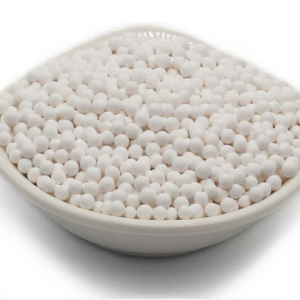| Ardakan Industrial Ceramics |

| Registration Date | 27 Oct 2020 |
| Revision Date | 27 Oct 2020 |
| Share |
Petroleum Well Treatment
alumina catalyst
Hydrogen sulfide (H2S) is an unwanted by-product of processes performed on fossil fuels (including natural gas and oil) that must be removed from fuels and combustion products. For this purpose, hydrogen sulfide can be converted to elemental sulfur (S8) in a process called the Claus process. S8 is a natural product in the process of producing natural gas and crude oil. At present, most of the sulfur required by the industries in the world is obtained in this way, while preventing the entry of a large percentage of toxic hydrogen sulfide gas into the atmosphere. In the Claus process, catalysts are used that increase the efficiency of the process. These catalysts are mainly used simultaneously in the sulfur recovery reactors of gas and oil refineries. The different types of these catalysts are:
Active Alumina Catalyst (Conversion Claus Catalyst): The main catalyst for the Claus process.
Titania Catalys (Hydrolysis Claus Catalyst): Used to convert COS and CS2 compounds to H2S.
Active Alumina Catalyst Modified by Iron (Oxygen Scavenging Type): Used to prevent toxicity of active alumina catalyst.
In the Claus process, some extra oxygen is generated which can inactivate the alumina catalyst. In fact, the reaction of O2 with SO2 on the alumina surface causes Sulphation of the alumina surface, which in turn prevents the reactions required for the conversion of H2S and CS2 in the Claus process. This issue is avoided by passing the gas through a deoxygenated catalytic substrate before the Claus process. Deoxygenation catalysts have the support of alumina, silica, or silicon aluminate, which contains a combination of Fe, Ni, Co, Cu, or Zn. The specific surface area of these catalysts should not be less than 100 m2/g and preferably should not exceed 150 m2/g. Doping of the metal element into the catalyst structure is conducted through methods such as in-situ or impregnation. Iron-impregnated alumina catalysts can change the amount of oxygen from 1000 ppm to 50 or 7 ppm.